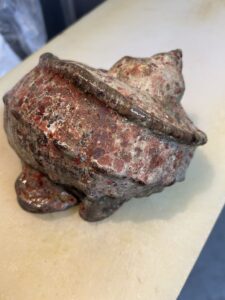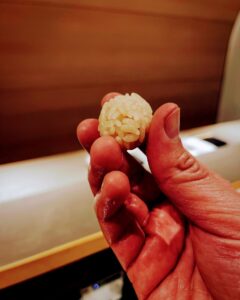The Ultimate Weapon of a Sushi Chef! Pursuing Supreme Sharpness with the Shapton Glass Stone 12000 Grit
Hello, this is Sushi Hatake! Today, I want to talk about something essential for any sushi chef: the sharpness of the knife.
The Secret Tool Behind Professional Sharpness
For a sushi chef, the knife is a vital partner — almost like life itself. And to maintain that perfect sharpness, a whetstone is indispensable.
This time, I got my hands on one of the finest whetstones from Shapton’s “Glass Stone” series: the 12000 grit stone. It’s an ultra-fine finishing stone meant for final polishing.
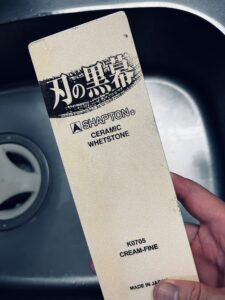
Discovering the Right Whetstone
When I began my sushi training, I quickly realized the importance of both a “good knife” and a “good whetstone.” Especially with Japanese high-end knives, proper sharpening can unlock their true potential many times over.
However, as the number 12000 indicates, this is a finishing stone. If you try to sharpen a dull or damaged blade directly with this, it won’t have much effect.
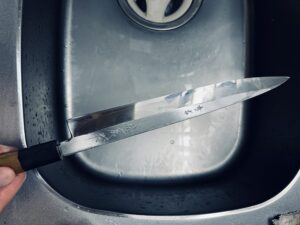
Understanding Whetstone Grit and Usage
Before choosing a whetstone, it’s essential to understand the concept of “grit.”
- Low grit (up to ~1000): Repairing chips, reshaping the blade
- Medium grit (1000–3000): Routine sharpening
- High grit (3000–8000): Finishing, enhancing sharpness
- Ultra-fine grit (8000+): Final polish, mirror finish
This 12000 grit whetstone is used to polish a well-sharpened knife to its final perfection. It ensures a beautiful, clean cut without crushing the delicate fibers of the fish — the final step to achieve sushi perfection.
How Sushi Chefs Use Whetstones
While training at “Sushikawa,” I learned the mindset of maintaining the knife little by little every day. Instead of waiting until the sharpness noticeably declines, it’s important to give it care daily, even if just for a short moment.
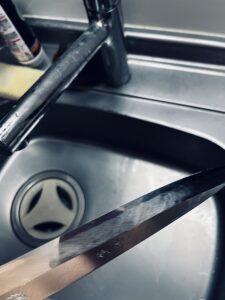
By lightly sharpening with the 12000 grit stone every day, the knife stays in peak condition, always ready to deliver the perfect cut that elevates the sushi. This is especially crucial when working with delicate fish like tuna or flounder.
For Those Wanting to Experience Authentic Edomae Sushi in Tokyo
If you’re interested in seeing the art of Edomae sushi, including the sharpening techniques behind it, I recommend trying our sushi catering services or sushi-making experiences. At Sushi Hatake, we offer sushi services delivered to your home or special venue.
If you’re interested, please feel free to contact us. English support is available, so you can rest assured even when hosting international guests!
For sushi catering or sushi-making experiences in Tokyo, leave it to Sushi Hatake!

